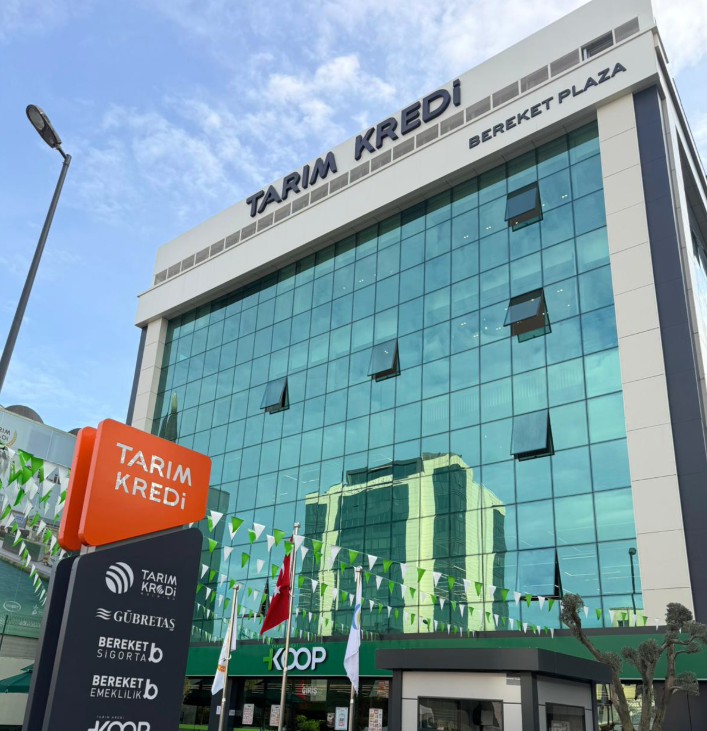

Under the leadership of the late Prime Minister Adnan Menderes, Turkish agriculture experienced a period of significant breakthrough with mechanization, cultivated land and increase in the amount of products.
(This news is quoted from Anadolu Agency's news dated May 27, 2020.)
A great revolution took place in the agricultural sector with the steps taken during the prime ministership of the late Adnan Menderes. From the number of tractors to the increase in cultivated land and productivity, Turkish farmers and villagers have undergone a comprehensive transformation.
According to the information compiled by the AA correspondent from the publications of the Democratic Party (DP) period, very important breakthroughs in agriculture occurred one after another under the prime ministership of the late Adnan Menderes.
Menderes, who was born at Çakırbeyli Farm in Aydın as the son of a farmer, was a person very close to agriculture and the land. Menderes, who took over the management of the farm at the age of 23, understood agriculture and knew the problems well.
When Menderes came to power, he gave the message of the agricultural policies to be followed: "80 percent of Turkey lives in villages. It requires soil, good seeds, fertilizer, machinery and irrigation. "Our villagers cannot do these alone, we need to extend our hand as a state." He gave it with his words.
During its 10-year rule, the DP administration increased the share of the budget allocated to the Ministry of Agriculture, excluded the agricultural sector from the scope of taxes, distributed millions of decares of land to the peasantry within the framework of the Farmers' Landing Law, and gave importance to agricultural education activities by opening agricultural faculties. These are the main features that distinguish the DP administration from other governments. was among them.
Increase in the number of tractors
In this period, when agriculture-based growth came to the fore, there was a significant increase in the number of tractors, tractor plows and other tools and machines, and the transition from black slings to mechanized agriculture took place during this period. Funds provided from the Marshall Plan were directed to this area. Marshall aid accelerated mechanization, especially in agriculture. The number of tractors increased from 6 thousand 281 to 48 thousand 873 (7.8 times) in the period 1949-1958, the number of tractor plows increased from 6 thousand 50 to 48 thousand 214 (about 8 times), and the number of other tools and machines increased by 9 thousand. It increased from 239 to 67 thousand 261 (7.3 times). Mechanization changed the basic structure of agriculture. The number of combine harvesters between 1948 and 1962 reached 6 thousand 72 in 1994.
During this period, loans were also provided to the villagers with affordable means for the purchase of tractors. Peasants began to benefit from agricultural loans more than in previous periods. While the amount of agricultural credit was 810 million liras in 1950, it reached 4 billion 755 million liras in 1960. In addition to loans, agriculture was also encouraged with base prices and support purchases.

Cultivated areas increased
The introduction of tractors into agriculture not only increased productivity in this sector, but also resulted in the expansion of arable areas. While the number of cultivated areas was 13 million 900 thousand hectares in 1948, it increased to 22 million 940 thousand hectares by 1959. Thus, there was an increase in agricultural production that enabled Turkey to become a grain exporter. During this period, the cultivation areas and production of cereals, pulses, cotton and industrial plants increased.
During the DP governments, more than 16 thousand acres of land were distributed to 322 thousand 61 families in 4 thousand 85 villages. Additionally, approximately 12 million acres of pasture land were allocated to these families.
Mechanization and credit policy enabled the elimination of feudal property in the agricultural sector to a large extent. The number of owner-operated businesses increased from 2.1 million in 1950 to 3.1 million in 1963.
While the share of the agricultural sector in national income was 42 percent in the 1947-48 period, it increased to 45.2 percent in the 1952-53 period.
In addition, during the 1950-1960 period, roads were built to reach the smallest villages, and thousands of villages received drinking water. Along with mechanization in agriculture, the construction of 40 thousand kilometers of highways and 30 thousand kilometers of village roads not only increased the connection of the rural sector to the city, but also enabled the integration of the agricultural sector with the market economy.
The first fertilizer production started with GÜBRETAŞ
During this period, the importation of fertilizers and the lack of production at a level that would meet the needs constituted an obstacle to the widespread use of fertilizers. In this context, the establishment of both fertilizer research centers and fertilizer factories came to the agenda. On November 6, 1952, during Menderes's term as prime minister, the Council of Ministers of the period decided to establish Gübre Fabrikaları Türk AŞ (GÜBRETAŞ) in order to increase productivity through the use of chemical fertilizers in the country's agriculture, and the company officially began operations in 1953. Established as Turkey's first fertilizer company, the company started its first fertilizer production in its Iskenderun facilities. GÜBRETAŞ started the production of NSP (Normal Super Phosphate) fertilizer in this first factory with a capacity of 100 thousand tons and made it available to Anatolian farmers starting from that year. Anatolian farmers, who experienced great difficulties and grievances in the previous years without fertilizer, gained agricultural equipment and chemical fertilizers during the Menderes period, and the crops they removed from their fields increased exponentially.
GÜBRETAŞ's national and domestic production journey has reached today with the second factory established in Kocaeli-Yarımca in 1961 and other facility investments made over the years.
As of today, GÜBRETAŞ continues to be "100 percent of the people's company", with 25 percent of it being listed on the stock exchange and 75 percent belonging to Agricultural Credit Cooperatives, Turkey's largest farmer family.
Source: Anadolu Agency/ Deniz Çiçek Palabıyık














